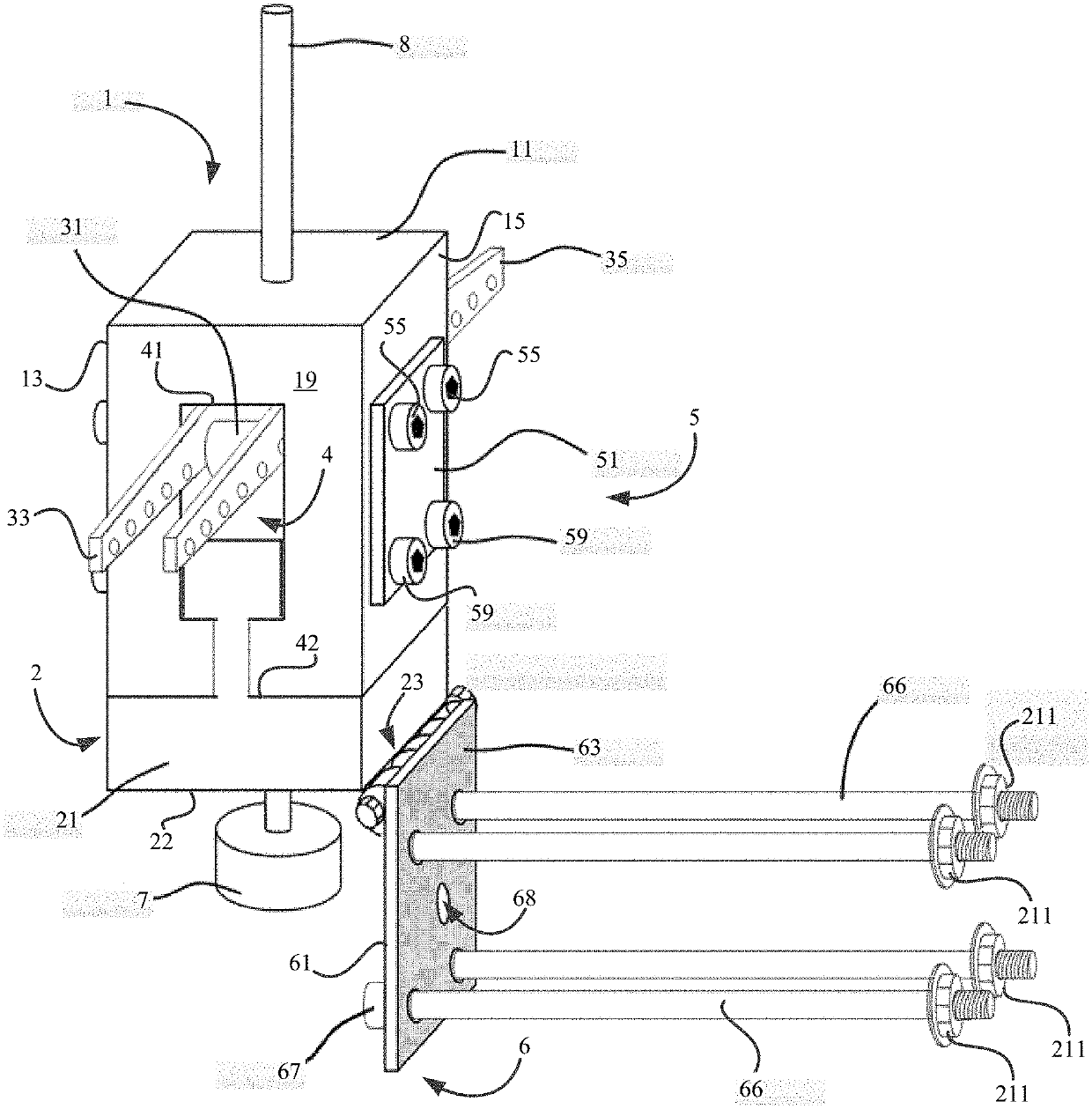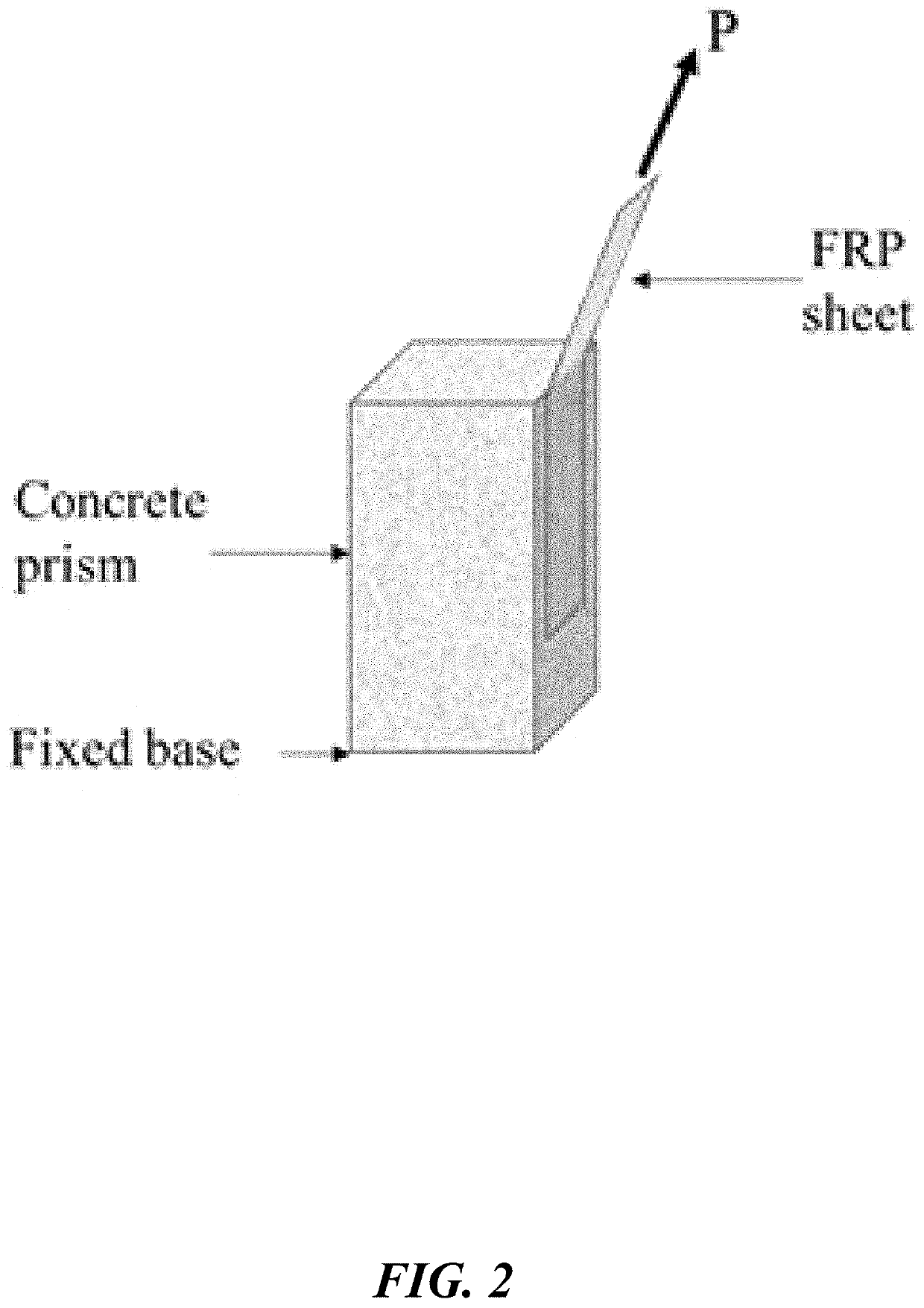Universal debonding test apparatus for carbon fiber reinforced polymer – concrete system and method for sequential multi-testing
a carbon fiber reinforced polymer and test apparatus technology, applied in the direction of material strength testing goods, material strength using steady shearing force, instruments, etc., can solve the problems of high variability in published results, affecting the performance of a cfrp-strengthened structure, and the community is yet to agree on a unified experimental set. achieve the effect of minimizing eccentricity, economic and efficient, and versatile and improving double-shear testing capability
- Summary
- Abstract
- Description
- Claims
- Application Information
AI Technical Summary
Benefits of technology
Problems solved by technology
Method used
Image
Examples
Embodiment Construction
[0044]All illustrations of the drawings are for the purpose of describing selected versions of the present disclosure and are not intended to limit the scope of the present disclosure.
[0045]The present disclosure describes a debonding test apparatus that can be used for analyzing interfacial bonds between carbon fiber reinforced polymer (CFRP) and concrete. By utilizing the test apparatus described, the stress transfer of a CFRP-strengthened structure can be simulated and evaluated.
[0046]Different testing setups and methods are available to investigate the bond behavior and debonding failures of surface bonded CFRP sheets. The testing configurations can be classified into four categories on the basis of the type of stresses generated in concrete: I) tension; II) direct or pure shear; III) combined shear and tension; and IV) flexure. The results of numerical and experimental studies indicate that testing configurations affect test results. Furthermore, it has also been reported that ...
PUM
 Login to View More
Login to View More Abstract
Description
Claims
Application Information
 Login to View More
Login to View More - R&D Engineer
- R&D Manager
- IP Professional
- Industry Leading Data Capabilities
- Powerful AI technology
- Patent DNA Extraction
Browse by: Latest US Patents, China's latest patents, Technical Efficacy Thesaurus, Application Domain, Technology Topic, Popular Technical Reports.
© 2024 PatSnap. All rights reserved.Legal|Privacy policy|Modern Slavery Act Transparency Statement|Sitemap|About US| Contact US: help@patsnap.com










